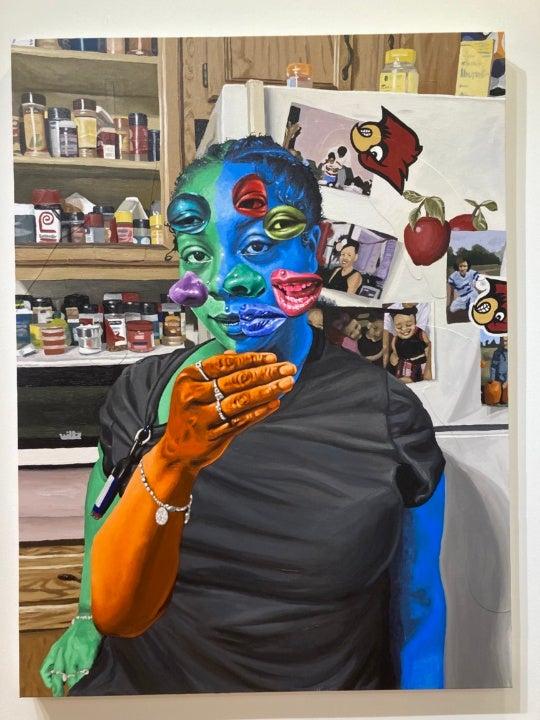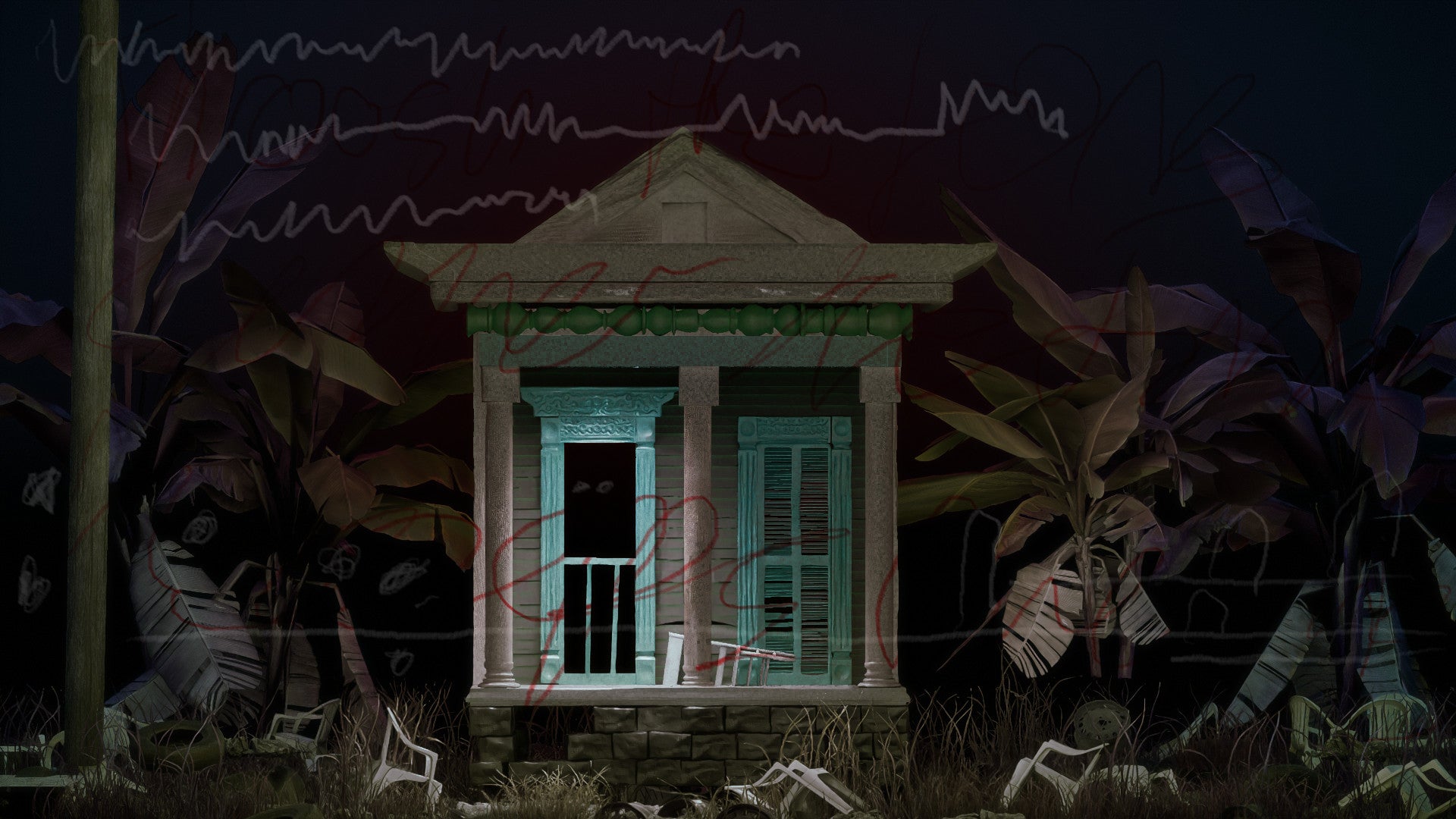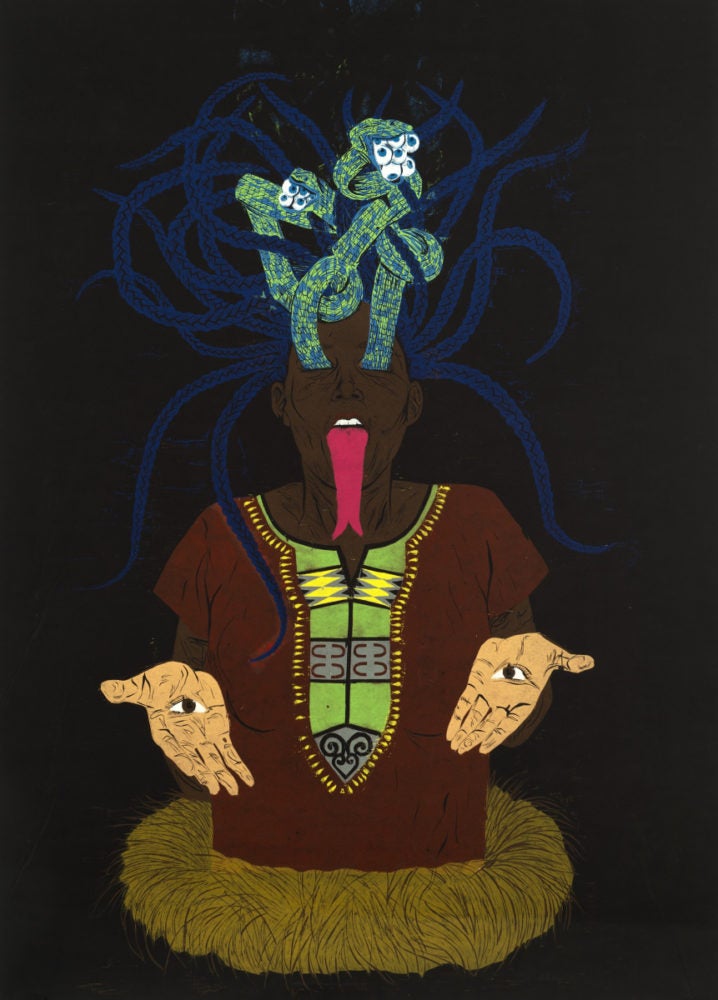
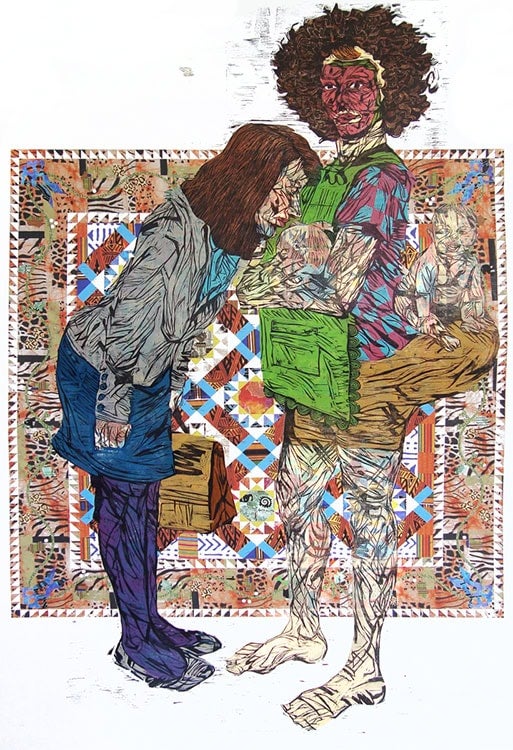
Andry’s work explores the negative effects of stereotypes on the lives of Black people and how these stereotypes give rise to biased laws and ideologies in our society. Her large-scale prints confront the viewer with these derogatory cultural clichés. The figures in the prints represent those who are targeted by racist characterizations. However, Andry specifically uses non-minority figures in this role to illustrate the fact that stereotypes are unjustly perpetuated.
For her exhibition at the Halsey Institute, Andry explores the stereotypes that engender gentrification. As Charleston’s neighborhoods are rapidly changing in multifarious ways, this exhibition provides a springboard for community-wide conversations on gentrification.
from the accompanying text
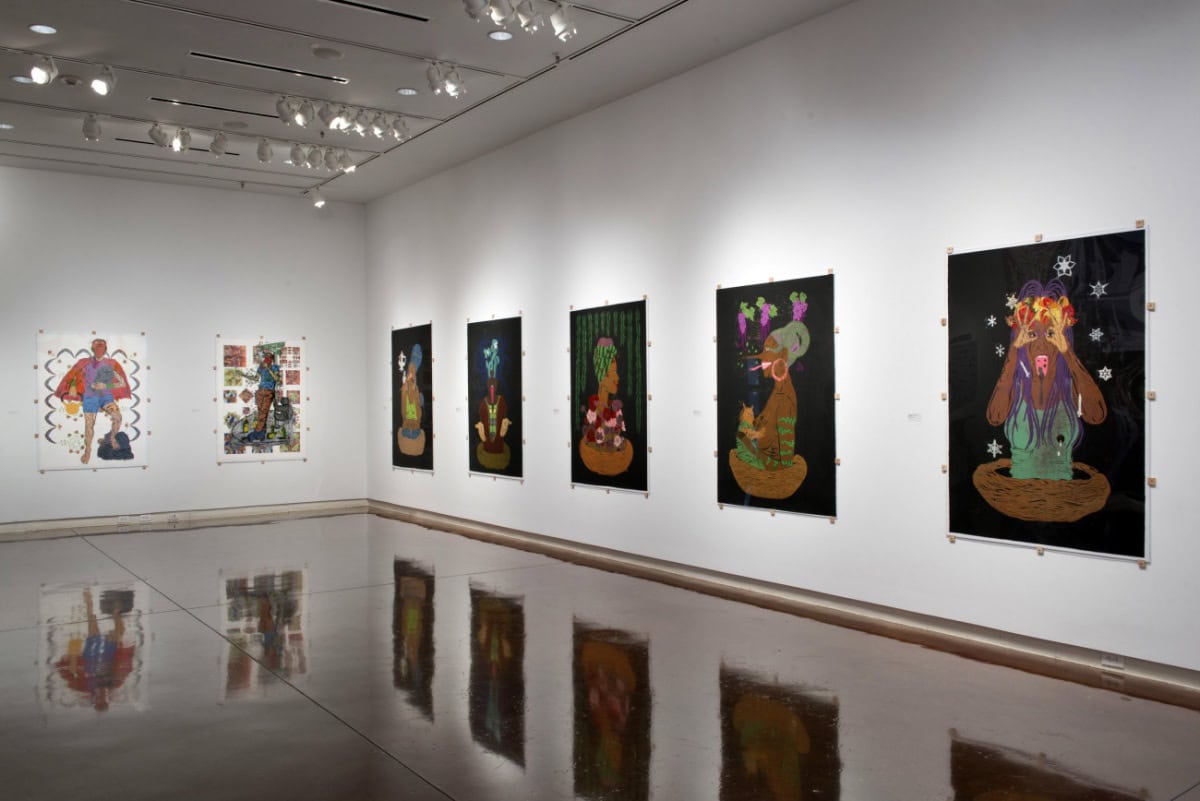
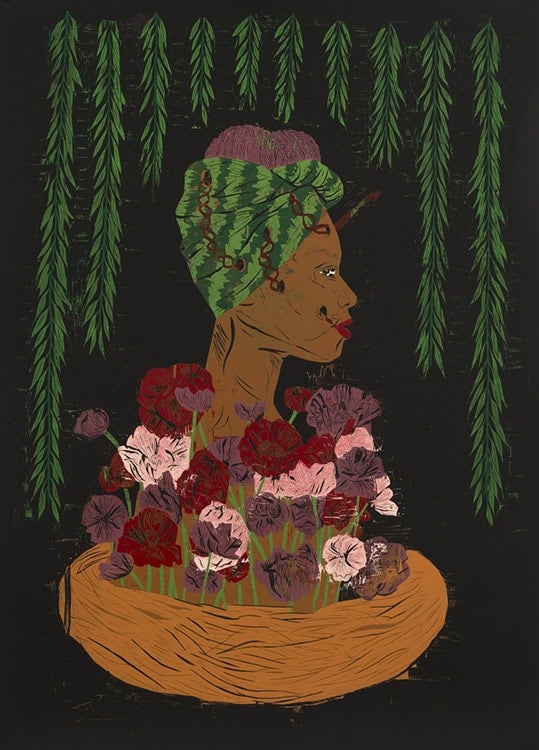
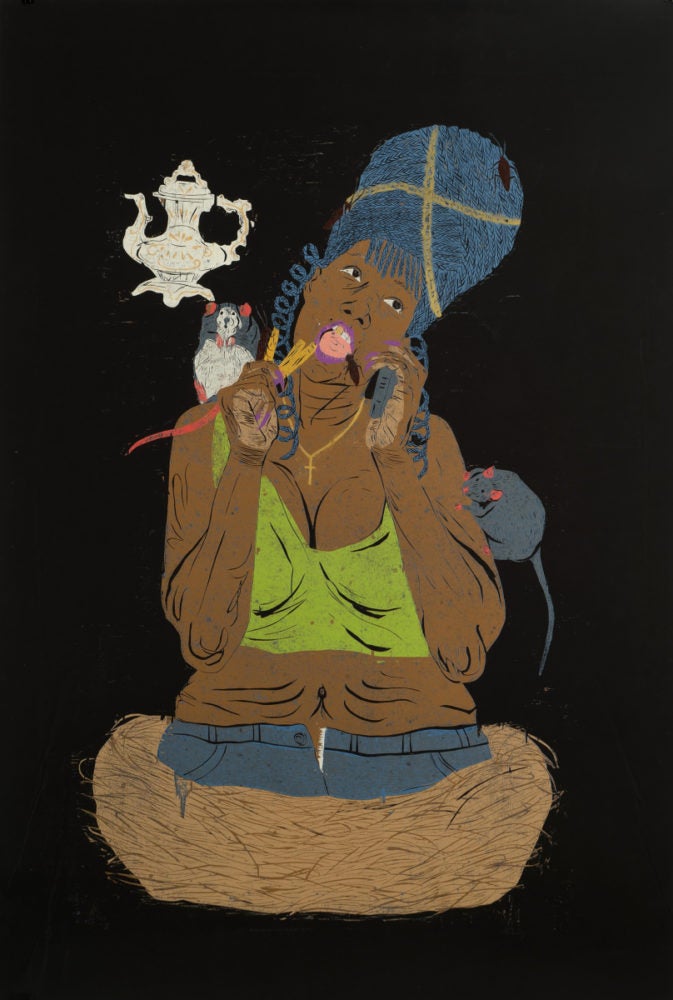
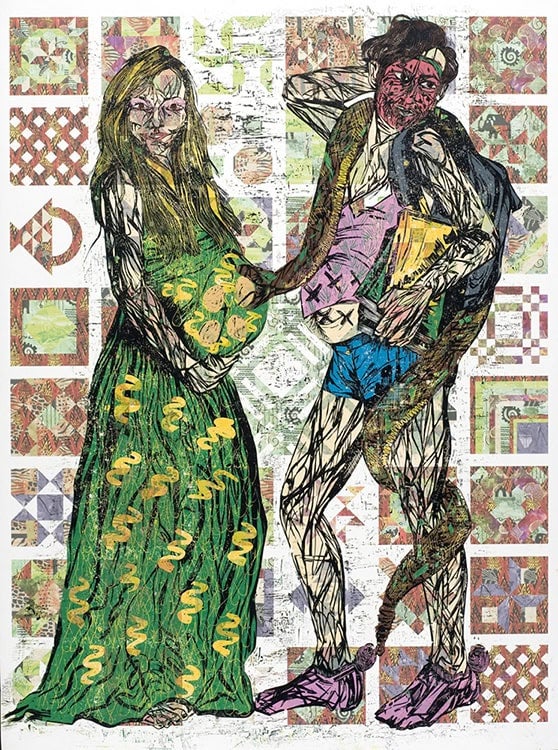
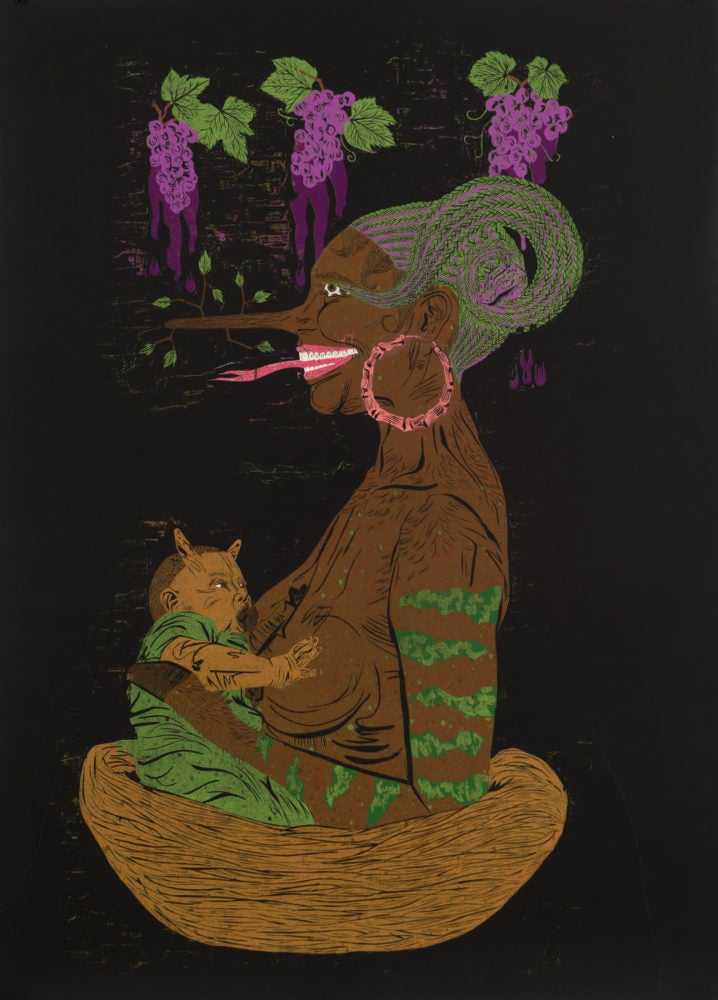
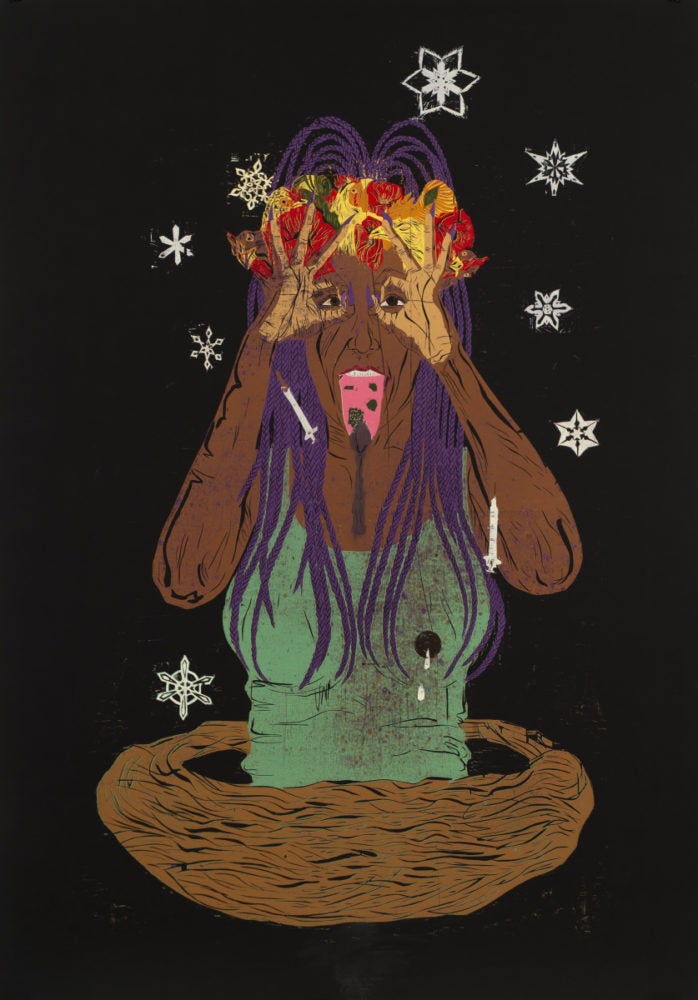
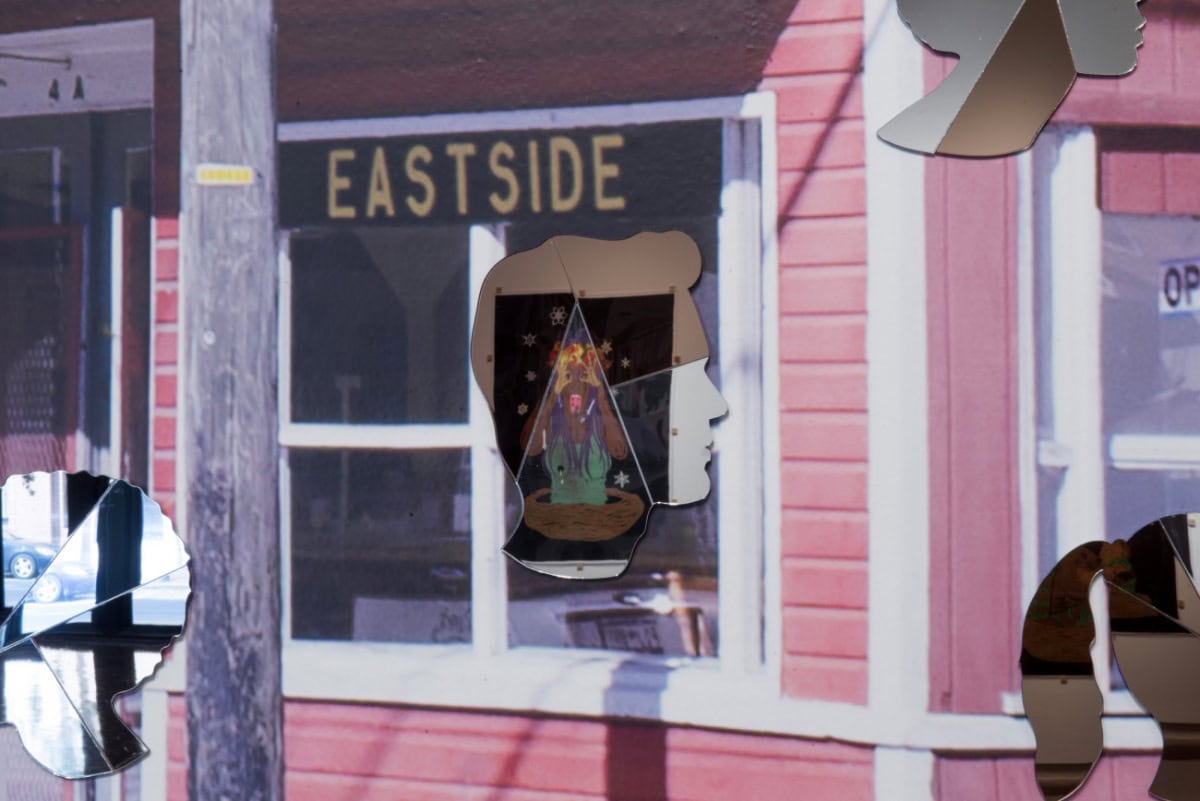
Katrina Andry: Over There and Here is Me and Me remains on view at the Halsey Institute for Contemporary Art in Charleston, South Carolina, through December 7.

